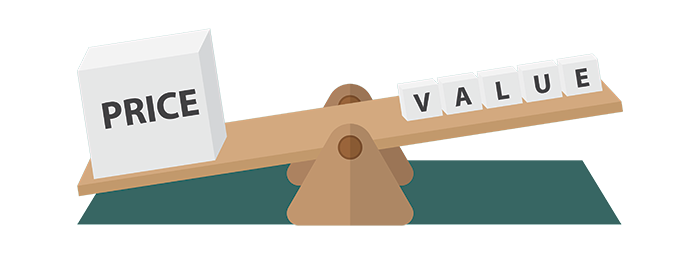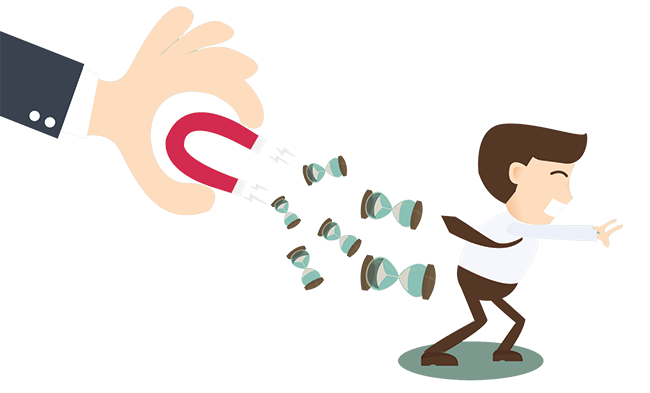Carefully pricing the products and services of a business is important to generate sales, keep customers happy and ensure long-term success.
Implementing a well-considered pricing strategy involves researching competitors, understanding the target audience, and keeping up to date with trends and changes in the market.
Psychological pricing is part of this wider pricing strategy. It’s a strategy in itself with numerous tactics that are designed to appeal to a customer’s emotional, rather than rational, response to prices.
When people perceive they are getting a bargain, are paying a reasonable price for a product or feel what they are paying offers great value for money, the reaction is innate and immediate.
Businesses implement psychological pricing to give the illusion of that value. The specific intention is to get customers to buy and feel happy about their purchase. For example, one tactic is to charge £9.99 instead of £10. Customers see the nine and perceive the product to be cheaper, although there’s only a penny in it.
Here we detail ten advantages of psychological pricing and explore some of the tactics used in a psychological pricing strategy.
Advantages of Psychological Pricing

1. Generate more sales
The number one reason to use psychological pricing is to increase sales. Using a range of tactics, or sticking to one that has been proven to consistently work, maximises profits for the services and products a company offers.
2. Implement with ease
Psychological pricing is an easy and fast tool to employ.
A business looking to boost revenue doesn’t need to go through time-consuming, costly product development or spend money changing packaging. Instead, it can use psychological pricing tactics to quickly update prices on the shelf or on a website to see an immediate increase in sales.
3. Test different pricing tactics
Tangible data is every business’ friend. It demonstrates without a doubt the success or failure of different business strategies. Sales data will show immediately whether a psychological pricing tactic has worked or not. It is therefore straightforward to test different types of pricing to see which resonates most with customers.
Every business and its customers are different, so a tactic that works for a supermarket might not work for a subscription-based SaaS company, a gym or a telesales business.
4. Direct buyer attention to targeted items, services or ranges
Psychological pricing focuses buyers’ attention on specific products, services or ranges.
For example, if a shoe company is looking to shift its stock of old season sneakers before the new season’s arrivals, then tweaking the prices to make these items seem more appealing to customers will help to sell them.
5. Differentiate sales items from full-price items
Updating the price tags of sales items can make it obvious for customers to see immediately what’s on sale and what isn’t.
For example, all sales items could be priced at 99p. Or a percentage discount could be automatically applied to sale products on an ecommerce store. The less friction between a customer and a sale, the better. If a customer is confused or feels misled about what is on sale, they won’t buy.
6. Appear in lower price bands
Some customers use comparison websites to compare prices before they purchase. These sites often group amounts to make searching easier. Using the odd number tactic, a business can ensure they are included in a lower price band.
For example, if price bands for cars are £19,000 – £19,999 or £20,000 – £20,999 then a car priced £19,999 squeezes into the lower price band and so customers perceive it to be more affordable than a £20,000 car that is in the higher price band.
7. Compete with competitors
If a competitor launches a new product that is cheaper, by implementing psychological pricing a business can quickly tweak prices to ensure consumers believe they’re still getting the best deal with its products.
8. Entice people onto subscription packages
Free trials are a great way to persuade consumers to sign up to subscription packages.
This could be offering the ‘first month free’ or ‘try us for ten days’. Consumers believe they are getting a great deal and saving money. They are then ‘hooked’ on the service and remain signed up, or simply forget to cancel their subscription after the trial period ends.
9. Create customer loyalty
Customers love the feeling of getting a bargain or great value on a service. By creating this happy response to a sale, customers will return to that business for more.
Psychological pricing can be used to excite customers every time they return to a business, for example by showing them new deals or offering them ‘exclusive’ discounts if they purchase again or upgrade to a higher priced subscription.
10. Help curb fraud
It’s not easy to quickly calculate uneven numbers and create fraudulent transactions. It’s easier to steal when prices are set at rounded amounts. Therefore, many businesses use odd numbers to help to curb fraud, often at the cashier level.
Psychological Pricing Strategy Tactics
 With the advantages of psychological pricing fully understood, here are some of the main tactics used as part of a psychological pricing strategy:
With the advantages of psychological pricing fully understood, here are some of the main tactics used as part of a psychological pricing strategy:
Odd Pricing
This is a popular, tried and tested way to set prices. Consumers tend to read from left to right, see the first digit, and overlook the last few digits. Ensure the left-hand digit is lower and you’ll trick your buyer into thinking they’re in for a bargain.
This concept reasons that most consumers don’t round up prices and so consider them to be lower than they actually are e.g. a product for £14.49 is considered cheaper and more desirable than a product at £14.50.
Premium Pricing
Higher-priced products can prompt more sales, especially if customers are influenced by marketing that positions the brand as luxury or superior. Consumers see the high price tag and immediately assume the product is of premium quality.
They’ll then place emotional importance on that product and pay the high price even when it’s actually worth much less.
Discounting
There are numerous ways to discount products and services. These are often tied in with a limited time offer to prompt customers to purchase ‘before the price goes back up’.
The Buy One Get One Free (BOGOF) is a famous example. There are variations on the BOGOF discount, such as ‘Buy One, Get Two Free’ or ‘Buy One, Get £10 To Spend On Your Next Purchase.’
Percentage discounts are also widely used, e.g. 20% off. Discounting works well as it plays to the consumer’s perception of value: they believe they are getting a great deal, and are being rewarded for their patronage.
Bundles
Bundling products and services together creates an enticing sense of value. Telling customers that: ‘if you buy service X then you’ll also receive additional features Y and Z worth £50 for free!’, can drive a sale – especially if the customer believes there is a time limit on the offer.
Product Line Discounts
If a business has extensive products, then using the same price for every item in one range can create the illusion of a great deal with lots of choice, e.g. ‘this weekend all our men’s socks are only £3.99’.
Cost Breakdowns
Give customers the option to pay in instalments, especially for higher priced items, as this influences their view of affordability.
By highlighting that a £300 course ‘costs less than £1 per day’, or can be ‘paid in six monthly instalments of just £50’ makes the product seem affordable and therefore ‘doable’.
Stretching Payments and Lump Sum Payments at a Later Date
 Another well-used strategy for more expensive items is to stretch out payments over a longer period of time as well as giving a customer a product to use ‘for free’ for a few months before they must make a lump sum payment.
Another well-used strategy for more expensive items is to stretch out payments over a longer period of time as well as giving a customer a product to use ‘for free’ for a few months before they must make a lump sum payment.
Both these tactics play to a customer’s emotions by making the expensive product feel more affordable, even though they are eventually paying the same amount, and sometimes even more if there’s interest added.
Tiered Pricing
Tiered pricing is particularly effective for subscription-based businesses. This gives consumers a choice, and offers flexibility to downgrade, upgrade or cancel at any time. Tiered pricing clearly lists out features and benefits and customers believe they are getting a ‘good deal’ by picking a package that suits their budget.
There are many more tactics to consider as part of a psychological pricing strategy. There’s an extensive list of 42 tricks and tips here.
Take Advantage of Psychological Pricing
The advantages of psychological pricing are too good to ignore – from more sales, to safeguarding purchases that might’ve otherwise gone to a competitor, to building customer loyalty.
This is why so many businesses use a psychological pricing strategy to its full potential by combining different tried and tested tactics as well as innovating new approaches.
Psychological pricing prompts consumers to part with their cash – and feel good about it. What could be a better strategy than that?
Choose FastPay to become your trusted Direct Debit provider.












